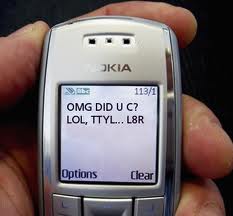People who read ‘traditional’ printed language such as books, magazines and newspapers are much more comfortable with accepting and understanding new words while heavy texters were less able to understand new words, and less willing to accept them, according to a recent study.
‘Our assumption about text messaging is that it encourages unconstrained language. But the study found this to be a myth,’ says Joan Lee of Calgary University.
Lee suggests that reading print media exposes people to variety and creativity in language that is not found in the slangy communication of text messaging, which tends to be confined to small groups of peers.
Previous studies had suggested that texting allowed people to be more creative with language.
But while text-messaging seems ‘creative’ in the way it shortens words, it’s actually subject to rigid rules.
The number of actual words used by texters is also more limited.
People who text heavily could be less able and willing to learn new words, one of the most crucial skills for reading.
‘The people who accepted more words did so because they were better able to interpret the meaning of the word, or tolerate the word, even if they didn’t recognize the word,’ says Lee.
While text messaging may seem ‘creative’ in the way it shortens words, users are actually restricted to a small, rigidly defined vocabulary.
‘Texting is associated with rigid linguistic constraints which caused students to reject many of the words in the study,’ says Lee.
